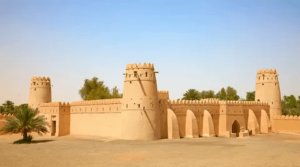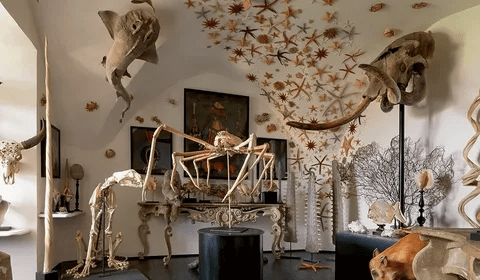Dubai is a city of endless contrasts. While it is globally celebrated for its futuristic skyscrapers and luxurious lifestyle, its rich cultural roots and historic neighborhoods offer a completely different perspective. Exploring Old Dubai, particularly the areas of Deira and Al Bastakiya, unveils the soul of the city—a fascinating blend of history, tradition, and charm that predates its modern identity.
Why Visit Old Dubai?
Old Dubai offers a glimpse into the city’s humble beginnings. Before the skyscrapers and shopping malls, the areas of Deira and Al Bastakiya were bustling hubs of trade and community. Walking through their narrow alleyways and traditional souks transports you back to a simpler time, showcasing the authentic Emirati way of life.
Deira, known as the trading hub of the olden days, is still alive with energy. Its markets and waterfront offer insight into the trading traditions that once defined the region. Al Bastakiya, on the other hand, stands as a testament to Dubai’s architectural and cultural heritage, filled with restored wind-tower buildings and charming courtyards.
What Makes Deira So Special?
Deira’s traditional souks are among its most captivating features. The Gold Souk is a shimmering labyrinth of gold and jewelry shops, offering some of the best prices in the world. This market is a testament to Dubai’s long-standing love affair with gold and precious metals.
Another highlight is the Spice Souk, where the air is filled with the aroma of exotic spices, dried fruits, and fragrant teas. This bustling market is a sensory experience, with traders offering everything from saffron to local blends of coffee.
Deira’s connection to Dubai Creek also makes it unique. Traditional wooden dhows can still be seen docked along the creek, recalling the area’s history as a vital trading port. Visitors can hop on an abra, a small wooden boat, for an affordable ride across the creek, enjoying views of old and new Dubai coexisting side by side.
How Al Bastakiya Preserves History?
Al Bastakiya, also known as the Al Fahidi Historical District, is one of Dubai’s oldest neighborhoods. Walking through its narrow lanes reveals a world of beautifully preserved buildings featuring wind towers—a traditional architectural element designed to cool homes naturally.
This neighborhood was originally established by Persian merchants who settled here in the late 19th century. The influence of their culture can still be felt in the area’s design and ambiance. Today, Al Bastakiya is home to art galleries, museums, and quaint cafés that give visitors a chance to pause and appreciate the history around them.
What to Explore in Al Bastakiya?

The Dubai Museum, housed in the Al Fahidi Fort, is a must-visit for anyone interested in understanding Dubai’s transformation from a modest fishing village to a global metropolis. Exhibits here vividly depict traditional Bedouin life, ancient trade practices, and the city’s pearl diving industry.
Another gem is the Sheikh Mohammed Centre for Cultural Understanding (SMCCU). This center hosts cultural meals, guided tours, and Q&A sessions that foster a deeper appreciation for Emirati traditions and customs.
For art lovers, Al Bastakiya offers several galleries showcasing contemporary works by local and regional artists. A stroll through the neighborhood often leads to surprising discoveries, from hidden murals to unique art installations.
Why Dubai Creek is the Heartbeat of Old Dubai?
Dubai Creek is the lifeline that connects Deira and Al Bastakiya, offering a timeless charm that contrasts with the modern cityscape. The creek was once the epicenter of trade and commerce, with merchants using it as a gateway to bring goods from around the world.
Today, the creek remains a hub of activity, with traditional dhows continuing their journeys. Visitors can take a dhow cruise to experience the creek’s significance firsthand, enjoying a unique perspective of Old Dubai’s waterfront and bustling atmosphere.
To truly experience the essence of Old Dubai, it’s important to explore at a leisurely pace. Start your day in Deira by visiting the bustling souks. Allow yourself to wander through the Gold and Spice Souks, taking in the vibrant energy of the traders and their wares.
Cross the creek on an abra to reach Al Bastakiya, where you can spend the afternoon soaking in the district’s historical ambiance. Enjoy a traditional Emirati meal at one of the cultural centers or quaint restaurants in the area.
Evenings are perfect for a dhow cruise along the creek. These cruises often include dinner and traditional entertainment, making them a memorable way to end your journey through Old Dubai.
What Makes Old Dubai a Must-Visit Destination?

Old Dubai provides a stark contrast to the city’s ultra-modern persona, offering a window into its roots and traditions. The blend of history, culture, and community found in Deira and Al Bastakiya makes them unique destinations that should not be overlooked.
While the glamour of New Dubai may attract the spotlight, the charm of Old Dubai lies in its authenticity. Exploring these historic areas is like peeling back layers of time, revealing stories of resilience, growth, and identity.
Deira and Al Bastakiya are more than just neighborhoods—they are living museums of Dubai’s rich past. Each alleyway, market, and waterfront view tells a story of the city’s evolution.
Whether you are a history enthusiast, a culture seeker, or simply curious, exploring Old Dubai is an unforgettable journey that connects you with the roots of this dynamic city. The harmony between tradition and progress in these neighborhoods ensures that their legacy will continue to inspire generations to come.
Pros and Cons of Exploring Old Dubai A Journey Through Deira and Al Bastakiya
Pros:
- One of the best things about exploring Old Dubai is the chance to experience the city’s rich history and cultural heritage. Areas like Deira and Al Bastakiya offer a unique glimpse into Dubai’s past, filled with traditional architecture and local markets. It’s a great way to learn about the city’s roots and its transformation from a small fishing village to a modern metropolis.
- Another advantage is the affordability. Unlike the high-end attractions in New Dubai, a trip to the souks, a boat ride on the creek, or a stroll through Al Bastakiya doesn’t require a large budget. The traditional markets, like the Gold and Spice Souks, are a fascinating experience that doesn’t cost much, and an abra ride across the creek is also very cheap.
- Old Dubai is also perfect for those looking for an authentic, local experience. Here, you can enjoy traditional Emirati food, shop for unique handcrafted items, and see real local life in action. It’s a quieter, more laid-back side of Dubai that gives you a break from the modern hustle and bustle.
Cons:
- One drawback of visiting Old Dubai is that it can be quite crowded, especially in the souks. The busy markets and narrow streets can feel overwhelming at times, particularly during peak tourist seasons. You may need to be patient and deal with large groups of people.
- Another downside is the heat, especially if you’re visiting during the hotter months. Since much of Old Dubai is outdoors, walking around in the sun can be uncomfortable. Although there are some shaded areas, it’s important to stay hydrated and wear sunscreen to protect yourself from the sun.
- Some of the older buildings and areas might not have the modern conveniences you’re used to. While the traditional feel is part of the charm, some visitors may find the lack of air conditioning or modern facilities in certain areas a bit inconvenient.
- Lastly, Old Dubai might not offer the same luxurious experiences that New Dubai does. While it’s rich in history and culture, it doesn’t have the same high-end shopping malls, fancy restaurants, or entertainment options as the more modern parts of the city. This may be a downside for travelers looking for luxury or cutting-edge attractions.
FAQ’s
Q: What is the best time to visit Old Dubai?
The best time to visit Old Dubai is during the cooler months, from November to March. The weather is more comfortable for walking around and exploring outdoor areas like the souks and Al Bastakiya. If you visit during summer, be prepared for the intense heat and bring plenty of water.
Q: Is it expensive to visit Old Dubai?
No, visiting Old Dubai is generally affordable. Many attractions, such as walking through the souks, exploring Al Bastakiya, or taking an abra ride across the creek, have low or no entry fees. You can enjoy a rich cultural experience without spending a lot of money.
Q: How can I get around Old Dubai?
You can easily get around Old Dubai on foot, as the areas of Deira and Al Bastakiya are close to each other. For a fun experience, you can also take an abra ride across Dubai Creek, which is both inexpensive and a great way to see the city from a different angle.
Q: What should I wear when visiting Old Dubai?
When visiting Old Dubai, it’s best to wear comfortable clothing and shoes, as you’ll likely be walking a lot. If you’re visiting during the summer, dress in light, breathable fabrics to stay cool. It’s also respectful to dress modestly when exploring cultural areas, especially in Al Bastakiya.
Q: Can I buy souvenirs in Old Dubai?
Yes, Old Dubai is full of shops selling unique souvenirs. The Gold Souk offers beautiful jewelry, while the Spice Souk has aromatic spices and herbs. You can also find traditional crafts, textiles, and other handmade items, perfect for taking home as gifts or mementos.













Leave a Reply